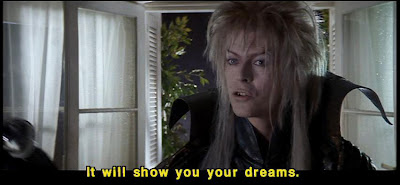Act I
ζωή
ζωή
The central image of the song is that singer identifies herself as a wax doll (poupée de cire), a rag doll (poupée de son), and a fashion doll (poupée de salon). Her heart is engraved in her songs; she sees life through the bright, rose-tinted glasses of her songs. Is she better or worse than a fashion doll?
Her recordings are like a mirror where anyone can see her. Through her recordings, it is as though she has been smashed into a thousand shards of voice and scattered so that she is everywhere at once.
This central image is extended, as she refers to her listeners as rag dolls (poupées de chiffon) who laugh, dance to the music, and allow themselves to be seduced for any reason or no reason at all. ("Poupée de cire, poupée de son")
 |
| They gave him vinegar to drink mingled with Gall |
As for the rest, the various goddesses, modifications of the one Shakti, were differentiated in two kinds: the first, luminous and beneficial (e.g., Parvati, Uma, Lakshiami, Gauri); the second, frightful and dark, (Kali, Durga Bhairavi, Camunda). This differentiation is not precise, since the same goddess could assume either of the two aspects when reflecting the attitude of the devotee approaching her. . . . People turned to devotion and to cult (bhakti and puja), in order to achieve emotional experiences (rasa) with mystical overtones. The natural consequence of this was that the Goddess in her bright aspect became the favorite reference point of the masses, coming to hold almost the same status that the "Mother of God" enjoys in Christian devotion. . . .
Shakti is given the name Parashakti, to emphasize that no other being or principle ranks higher than her. The ancient pre-Aryan understanding of Shakti as the magna mater, or mother of the gods - a sovereign divinity from whom every life and existence derives - undergoes a radical transformation as a consequence of the encounter with Aryan Upanishadic metaphysics. Shakti there becomes "she who dwells in everything in the form of power" (Shaktirupa). . . .
According to Spinoza, the world proceeds eternally and almost necessarily from the substance of the godhead . . . Since in human experience the ideal prototype of unrestrained action is play (lila), the Tantras do not hesitate to call Shakti's manifestation "play" and to say that (1) her essence is play (lilamayishakti); (2) her name is "playful," lalita; and (3) the supreme Shakti's (Parashakti) solitary game finds expression in every form of manifested and conditioned existence, whether human, subhuman, or divine. (Julius Evola, The Yoga of Power)
Sankhya is a darshana based on dualism. As its hermeneutic principle it adopts an original duality, that of purusha and prakriti, corresponding to the masculine and feminine elements; spirit and nature, and consciousness and unconsciousness. The former is unchangeable, the latter is the principle of movement and of becoming. Sankhya meticulously excluded from the first element, purusha, anything that is not pure, impassive, or action-oriented. Creation derives from a peculiar connection of these two principles and from an action originated by purusha (called "catalysis" in chemistry) and determined just by its presence. The closest analogy I can think of comes from that Aristotelian doctrine which explains the world and its becoming in terms of motion and of the desire awakened in matter (ule = prakriti) by the nous, or "unmoved mover." Prakriti, as such, is thought of as an equilibrium of three powers . . . Purusha's reflection on prakriti breaks this equilibrium, and by virtue of an impregnating action it causes motion and thus prakriti's unfolding into the world of forms and phenomena, which is called samsara. Sankhya also contemplates a "fallen condition," corresponding to a fundamental notion found in both Hindu and Buddhist metaphysics, namely avidya, or ignorance. Purusha identifies with its own reflection in prakriti, the so-called elemental Self (bhutatman), thus forgetting it is "other" that is, the impassive being whose substance is pure light, or the "spectator" . . . .
Sankhya offers an explanation of the world, not in terms of pure spirit, or of pure nature, or as being immutable or in a process of becoming, but rather by introducing the purusha-prakriti dyad. These two principles become connected in various ways: following the loss of equilibrium of the gunas, prakriti, after being fertilized by purusha's reflection, "becomes" and grows in the manifested world of "names" and "forms" (namarupa is the classical Hindu designation for the differentiated universe). . . . "Shakti is like a pure mirror through which Shiva experiences himself." (Evola)


Plato asks us to imagine a large subterranean cave in which are prisoners who have been confined there ever since their child-hood. They are made to sit in a long row facing one of the walls of the cave and they are chained to their seats in such a way that they cannot turn their heads, being only able to look straight in front of them. A fire raised up behind them, casts its light on to the wall and between them and the fire puppets are being carried, made in the image of all kinds of living and lifeless earthly creatures. But not being able to turn their heads, the prisoners can only see the shadows which the puppets cast on to the wall in front of them. Then, Plato asks us to imagine that one of the prisoners escapes from his chains. First he is able to look around and see the puppets themselves. Then he escapes from the cave and goes up to the outside world where are to be seen all those things in whose likeness the puppets were fashioned. . . . the spiritual realities and which the things in this world are symbols. It is easy to see now what Plato means by archetypes and what does true knowledge signify. . . . before entering the body soul lived in the world of archetypes. But after becoming detached from Intellect and becoming attached to material body (corpus) it tends to forget these archetypes. Since all things in sensible world are made in the likeness of these archetypes or primordial images, they remind the soul of its essential abode. From this point of view all knowledge is REMINISCENCE . . . (Naumana Umar)
"Trapped in a prism, in a prism of light" (Reflektor)
 |
| (Elliot Wolfson, Through a Speculum that Shines) |
 |
| #Prism |
 |
| (Rene Guenon) |
The gross state is the corporeal and sensible world, the tangible, visible level of material existence whereas the subtle state is the inner world of forms, extra-corporeal modalities of the human being such as thoughts, ideas, imagination, experiences, emotions etc. These two are also called gross body (Sthula Sarira) and subtle body (Suk-Sana Sarira) respectively. . . . formless manifestation universal principle or "self" is unmanifested; it is beyond Being. Being is a veil of the "self" or Brahman. This veil is Maya . . . We must always keep in mind the simile which compares Buddhi as a ray emanating from the sun (Atma or Brahma). All the human mental processes take place through the power and illumination of this divine ray. . . .
The word personality is derived from "Persona" signifying a mask worn by the actor during a play. The mask bears the features or make-up of the role whereas the actor himself remains anonymous, aloof and unconcerned with the enacted sufferings and passions. In modern outlook the actor and the persona has become identical whereas Hindu philosophy insists upon the difference, stressing the distinction between the actor and the role. It emphasis the contrast between displayed existence of the individual and real being of the anonymous actor, concealed and veiled in the costumes of the play. One of the dominant endeavours of Indian thought throughout the ages has. been to develop a dependable technique for keeping the line clear between the two. Their interrelationships and modes of collaboration are defined and a systematic effort is made to break from the confines of one into the unfathomed reaches of the other, primarily through the discipline of yoga, which cuts through the mask and reveals to consciousness the centre of one's being. (Umar)
Are we reels of recording "tape"? Memory units reflecting back Zebra the total organism? Are we sophisticated percept-and-record systems that (barring malfunction) can serve later on to re-establish what has now passed on to further stages? . . . To remember seems to entail (or produce) something more than we tend to realize, e.g., when an LP record "remembers" the performance of a Schumann song cycle sung by the late Fritz Wunderlich. In a certain very real (true) sense it doesn't just remember that Wunderlich sang that song cycle but in point of fact restores (to perfection as limit) that voice and that music. . . . (Philip K. Dick, Exegesis)
I met you up upon a stage
Our love in a reflective age
Our love in a reflective age
| ". . . each human being is the inheritor of a divine spark, a bit of fire given by the hand of God." |
 |
| (Divine Sophia: The Wisdom Writings of Vladimir Solovyov) |
 |
| (Russian Religious Thought) |
PrisM & Pris (Dreaming of Electric Sheep)
Is it possible that each part of the great soul must earn its reprieve, before enlightenment (memory restored) occurs? It does not just happen to remember; anamnesis is granted it as a reward, perhaps after centuries of trial. Did it sin originally and so fall? Was it cast out of the pleroma? Was it one "Lucifer," one bright "star" of many? And must it work its way back up gradually and arduously? Was it punished? Only by transforming itself could it (its pieces) receive its original state back. This was the fall, the fall, trials here and eventual return. . . .
He occludes us and he brings us lucidity. Very sophisticated. Also very old, historically. The master magician is a form the benign Creator takes; the benign Creator, then, is a form which the master magician takes. . . . The creator deliberately plants clues in his irreal creation (which he enters, and then suffers deliberate amnesia)—clues which he cunningly knows in time (eventually) will restore his memory (anamnesis) of who he is, and that his creation is irreal and has imprisoned him in it. Thus freeing himself and restoring himself to godhood. Wow! So he has a fail-safe system built in. No chance he won't eventually remember. Makes himself subject to [spurious] space, time and world (and death, pain, loss, decay, etc.), but has these disinhibiting clues or stimuli distributed deliberately, strategically in time and space.... Thus, as perfectly epitomized in the Ubik commercials, he can exist (be) at any trashy layer—sincerely—he wants to be, in any trashy form. But in the end, he remembers (as witness the 'ad' over the final chapter of Ubik)." . . .
 |
| Rachael's pink laser rays |
The person who could introject the cosmos would be in a position to possess absolute (and a priori) knowledge about the universe, in contrast to the defective a posteriori normal sensory method. . . . This transform could not occur unless the inner (micro) and outer (macro) were isomorphic in the first place. It's the mirror phenomenon. Your mind picks up the image of the cosmos and the cosmos reflects your mind back at you, so a back-and-forth push-pull interaction occurs. . . .
The secret Christians, although a persecuted minority (illegal and in hiding), are the rightful in habitants in the sense of heirs to the Kingdom. The ostensible world is not their world, but the ostensible world is fraudulent—only seeming—anyhow. There is a world within a world, a genuine invisible latent one within the spurious visible ostensible one; they are coaxial—and it is the physical language of the genuine invisible latent one that is my language, which is why my relationship to the ostensible world is one of total alienation (Fremdheit, geworfenheit, unheimlichkeit), I am a citizen of another kingdom entirely (one that had at that moment communicated with me). Ah; I knew more—crucially more—than the girl said. She did not say "secret" or "illegal" but (as I recently realized) I knew this; only a fellow secret, illegal Christian is supposed to see the fish sign as a sign, as a message requesting an answer. I could not give her my answer—she had left—but I knew the answer (it was, yes I am). . . .
I understood world but also I understood myself. The Golden Fish sign reflected back to me—as a mirror—my own hidden, real nature. This can never be denied (by me about myself). Hence when I read Luke that night I read what seemed to be my own writing. This is a great mystery and miracle; it is world's salvation and my own. (Dick)
Kalifornia Gurls
Satanic Counterfeits: The Demiurge's Muse
Planet Hellywood Sadcore
[Felix] Guattari, and his long time collaborator Gilles Deleuze, saw the unconscious as a machine. . . . a factory that produces desire and that attempts to plug itself into a variety of other machines and processes. Firstly, the breast machine of the Mother, then the various social machines – the school machine, the capital producing machine of the workplace, then the drug machine or the language machine. We desire to connect ourselves to our partners, thinking that we cannot be complete without them; we become sockets and plugs, coupling in the human and the machinic sense. However, desire, for Deleuze and Guattari refers not to sexuality per se but to the will of the machine to connect to others and to proliferate the flows that run through it; it is linked to sexual desire and certainly covers it but is not limited to it. Their form of desire extends far further into our unconscious and our very natures. We might think of it as the Nietzschian Will-To-Power or the pre-subjective libido of Freud. (Paul Elliott)
 |
| Wrapped in Plastic (Candyland of Gods and Monsters) |
"My initial impulse to make these paintings really came out of an awareness of the commercial consumer landscape that we live in. Every day we're bombarded with hundreds, if not thousands of messages designed specifically to incite desire within us." . . . The female characters are icons of indulgence and languor, reflecting the feel of the landscape itself. . . . Will Cotton was the Artistic Director for Katy Perry's 2010 music video, California Gurls, which was based on themes and imagery from his paintings. ("Will Cotton")
 |
| Image after an Image |
That I never saw that all this had to apply to our world is a measure of the failure of the artist to discover the relationship between his art (or in my case the worlds within my art, the topic of my art) and life, his life, all our lives, our world. The first philosopher to prove beyond doubt that what our senses perceive as the Real World cannot in actuality be real (not probably isn't, but cannot) was Parmenides. He also realized that this did not tell him, by any known process, what in its stead was real. He could prove only negatives, which we're told can't be done. He did this very thing, and went his way. I think that in my writing I retraced the ground which he traced and came to the same conclusions, but I had the advantage of knowing in the back of my mind (i.e., my unconscious or right hemisphere) about Plato's concept of the idea universe, of which ours is a mirror reflection. You can see that Plato's whole concept was dictated by what Parmenides did somewhat before him; if not dictated by a priori necessity, then sooner or later by existential experience, as in my case (I speak of my March 1974 experience). The criticism, which I remember using in Philo 10A, a survey course at Cal, was that "What value does this metaphysical Eternal Real World of Forms of Plato have, since we can never encounter or experience it? Doesn't pragmatism show us that it is unnecessary to believe in it? All events can be explained just as well without it?" What I didn't know was that after Plato's time the Platonists and Neoplatonists developed methods of encountering that very real world of the Logos or archetypes, the plan (this is probably the best English rendering of logos) underlying all phenomena. (Dick, Letter to Claudia Bush, February 13, 1975)
 |
| Like a groupie incognito posing as a real singer |
Zebra counterfeits the counterfeit—which fits the Gnostic idea of the bumbling demiurge being helped out, out of mercy, by the true God. This helping out, not just of us humans but of the whole fallen (fucked up, not really real) cosmos is the transubstantiation of objects and processes on an invisible ontological level which I saw the growing Corpus Christi achieving. A fake fake = something real. The demiurge unsuccessfully counterfeited the pleroma, and now God/the Savior is mimicking this counterfeit cosmos with a stealthily growing real one. (Dick, Exegesis)
 |
| Zebra reflektor #roar |
 |
| Her message? |



"And there in a cloud appeared the Presence of the Lord" (Exod. 16:10), in order that the glory that is within it would not be seen, as it says, "He made darkness His screen" (Ps. 18:12), "a cloud and thick darkness are around Him" (ibid. 97:2), i.e., surrounding the Holy One, blessed be He, there is a cloud and thick darkness. This is to say, the inner glory that is within it is not seen, even by his servants and messengers who are sent before Him, but the thick darkness itself is the transparent and translucent light, as the sages, blessed be their memory, said in the prayer, "[You appeared to them] in bright clouds," and these are the sefirot. Their light in relation to His light is like the light of the candle in relation to the sun, and they are like a clear glass that shines and illuminates, showing to the eye what is within it. The tenth sefirah is the speculum that does not shine, and it is like a glass mirror, and the one who looks at it sees His image within it, and that which is within it is not seen outside it . . .
 |
| Coronation of the Sabbath Bride |
Therefore this sefirah is called the cloud of glory, for the glory is concealed in it. The rabbis, blessed be their memory, called it the speculum that does not shine because of the glory that is hidden within it. When the Holy One, blessed be He, wills to talk to His prophets, this sefirah becomes filled from the inner glory, according to their level, and they hear the word, but the one who speaks is not seen by them for He is hidden within it. . . .
 |
| [Sound C-Loud: "As . . . the character of the day is not hidden by those modified dense collection of clouds, so the Self, though pure, (or undefiled) is veiled for a long time by ignorance. But its power of Consciousness in living beings, which is established in this world, is not veiled."] |
[T]he divine manifestations, referred to on the basis of a standard liturgical expression as "bright clouds" ('arfale tohar), are the covering that hides the inner glory, kavod penimi. The function of the clouds, however, is not only to obstruct vision but to allow that which they conceal to be revealed. This is alluded to in the claim that the "thick darkness itself is the transparent and translucent light." The specific locus of the vision is the tenth sefirah, the Shekhinah, the cloud of glory, for through it the lights above are seen. . . . the explanation of the prophetic epiphany offered here preserves the concomitant concealment and disclosure of God . . . The last of the divine hypostases is feminine in relation to the upper potencies and is thus designated by the talmudic expression "speculum that does not shine." . . . like a mirror or prism, the Shekhinah reflects the luminous but invisible forms from above.
The masculine potency is the inner glory that in and of itself is hidden but is revealed through the lower, feminine potency, the cloud of glory. . . . The divine woman is an "optical apparatus" that refracts the light and renders the veiled image visible, like the rainbow that is manifest in the covering of the cloud. The eye can contemplate the interior image, the speculum that shines, only through the external sheath, the speculum that does not shine. (Wolfson)

Beyond the 32 paths
Breaking Bad

Whereas the Patriarchs had visions of the "lower colors" as reflected through the prism of the Shekhinah, Moses alone beheld the "upper colors" that are "concealed and invisible." . . . "The secret is: the eye that is closed and opened, when it is closed it sees the speculum that shines, and when it is opened it sees the speculum that does not shine. . . ." (Wolfson)



Who, then, is Kali? Devi gives her own description in the Kulachudamani: "I am Great Nature, consciousness, bliss, the quintessence, devotedly praised. . . . I, desiring creation, cover myself with my Maya (The great power of Shakti to delude all created things through Her play, ed.) and become triple and ecstatic in my wanton love play . . . After withdrawing the five fold universe, I, Lalita, become of the nature of nirvana. . . . This universe of parts appears and is then dissolved. . . . I am the essence of creation, manifested as woman, intoxicated with sexual desire, in order to know you as guru, you with whom I am one. Even given this, Mahadeva, my true nature still remains secret." . . . She has a rolling tongue, makes a terrifying roar, three reddened eyes, and has a wide open mouth. ("Kali")
The first phase of the contemplation of Shakti deals with the interiorization and the realization of the Shaktic worldview . . . by the attempt to lead the apprentice to an experience of the objective dimension of reality. This experience can be defined as a magical-symbolic perception of the world, which allows the individual to live and to act in a nature, a light, a space and time, and a series of causes and effects that are qualitatively different from those that characterize the natural environment inhabited by contemporary humanity. In the course of history a modification has taken place concerning not only the forms of subjective thought but also the fundamental categories of objective experience. We may say that maya's veil has become increasingly thicker and that the hiatus between I and not-I has widened considerably. The two main consequences of this process are the perception of the universe in terms of pure outwardness and the removal of the existential foundation of the previous living and sacred worldview. Modern science has built its theories on this lifeless and superficial exteriority. (Evola, The Yoga of Power)
The cunning counterfeit of reality, revealed as such when authentic reality breaks through . . . In Ubik it is the commercials and messages intruding "from the other side" . . . I am forced to conclude that our reality is a cunning counterfeit, mutually shared—and that the wise mind is trying to signal us—to do what? To kick over into anamnesis: discharge of DNA long-term memories. To remember and to wake up are absolutely interchangeable. (Dick, Exegesis)
 |
| Mirror, Mirror |
Perry adds: “Sometimes you look in the mirror when you’re crying and if you look in the mirror it will make you cry more because you’re feeling sorry for yourself. And then sometimes you look in the mirror and you cry and I’ve been like: ‘Snap out of it! It’s time to — come on — grow up! No!’ There’s almost like this inner warfare that comes out, this inner battle between the good angel and the bad devil.” (EW)
[The] Supreme Self thought (or reflected). . . . there arose in the Supreme Self a certain state like deep sleep. From that (state) māyā (or the illusive power of the Supreme Self) was born just as a dream arises in sleep. . . . She, who is of the form of the Three Guna (qualities or energies of Nature) brings forth the Universe with movable and immovable (objects). . . . Mahāmāyā (great māyā) both blinds us in delusion (moha) and has the power to free us from it. Māyā, superimposed on Brahman, the one divine ground and essence of monist Hinduism, is envisioned as one with Laxmi, Durgā, etc. ("Maya")
Shakti awakens. What ensues is no longer a state in which an immobile being, made of pure light, rests in itself, but rather a state in which the spirit is the object of perception and enjoyment. At first, Shakti's awakening somehow implies a negation of being, in the sense of an endless sinking into a self-accepting and self-concerned subjectivity. This is the primordial root of concupiscence, and the original cosmic "sensation" that determines the negation alluded to by the Tantric principle "Shakti's function is one of negation." Ancient Greece knew the myth of Narcissus, which the neoplatonic tradition employed in its own version of the metaphysical interpretation of reality. The act of Narcissus staring at his own image may symbolize the departing from the state of being, and the becoming lost in self-observation, self-perception, and self-love (the Sanskrit term nimesha, "closing the eyes," is given to Shakti in reference to her self-perception). . . . Therefore, the being that has become the object of knowledge, of desire and, of observation, ceases to be aham ("I") and instead becomes idam ("this"), in a sort of cosmic fall. This marks the rise of the original element of objectivity, or otherness, as a function of looking "upward." (Evola)
Shakti-dhyana's goal is to retrieve the primordial living perception of the world. The first phase of dhyana is based on the principle of correspondence; every phenomenon, thing, or state is associated with an immaterial power, with a being, or with a deity (devata). The second phase is based on the principle of identity: "Not only do these phenomena, things, or states of being correspond to these powers; they are these very powers." In the course of sadhana the combined action of sadhana's various aspects is supposed to lead the apprentice from the first phase, which consists of the foreboding of supersensible presences, to some sort of psychic perception (ritambhara). This perception is gradually stripped of external elements and processes until it reaches a final stage, in which formless "roots" (hence the term "emptiness," shunya or shunyata), corresponding to essences, are eventually perceived. . . . Contemplation, thereafter, gives way to the phase of identification: "Between this Shakti and me there is no difference whatsoever," "I am nothing but Shakti herself." (Ibid.)
Kill Yr Idols
The creative and productive aspect of the cosmic process is signified by the right hand, by the color white, and by the two goddesses Uma and Gaud (in whom Shakti appears as Praka-shatmika, "she who is light and manifestation". The second aspect, that of conversion and return (exitus, reditus), is signified by the left hand, by the color black, and by the dark, destructive goddesses Durga and Kali . . . when the left and right hands are in equilibrium we experience samsara, but when the left hand prevails, we find liberation. . . . "To destroy" and "to transcend" should be seen mainly in terms of (1) going beyond manifested and conditioned forms, and (2) getting rid of the habit of identifying oneself with external forms, whether human or cosmic. The "destruction" considered here concerns the elements of "desire" and of "enslaving fascination with the self." (Ibid.)
Saraswati (Sanskrit: सरस्वती, Sarasvatī ?) is the Hindu goddess of knowledge, music, arts and science. . . . She possesses four arms, and is usually shown wearing a spotless white sari and seated on a white lotus or riding a white swan. . . . Sometimes a peacock is shown beside the goddess. The peacock represents arrogance and pride over its beauty, and by having a peacock as her mount, the goddess teaches not to be concerned with external appearance and to be wise regarding the eternal truth. ("Saraswati")
We have just compared confusing a being with its outward and profane manifestation to wishing to identify an actor with the role he is playing. In order to clarify the exactness of this comparison, some general considerations on the symbolism of the theater will not be out of place . . . This symbolism may of course be linked to the original character of the arts and crafts, all of which used to possess an initiatic value by virtue of their attachment to superior principles, from which they were derived as contingent applications . . .
One can say in a general way that the theater is a symbol of manifestation, the illusory character of which it expresses as perfectly as possible; and this symbolism can be envisaged either from the point of view of the actor or from that of the theater itself. The actor is a symbol of the 'Self' or the personality manifesting itself through an indefinite series of states and modalities which can be considered as so many different roles; and one should note as an exact expression of this symbolism the importance in antiquity of the use of the mask.
Under the mask, the actor in fact remains himself in all of his roles, just as the personality remains 'unaffected' by all of its manifestations; the suppression of the mask, on the contrary, forces the actor to change his own physiognomy, and thus seems to alter his essential identity in some way. In every case, however, the actor remains fundamentally other than he appears to be, just as the personality is other than its multiple manifested states which are only the outward and changing appearances that it adopts in order to realize according to the various modes befitting their nature the indefinite possibilities that it contains within itself in the permanent actuality of non-manifestation.
From the other point of view we can say that the theater is an image of the world; both are 'representations', for the world itself, existing only as a consequence and an expression of the Principle, upon which it essentially depends in all its aspects, can be seen to symbolize the principial order in its own way; and this symbolic character confers upon it a higher value than that which it possesses in itself, since it is through its symbolism that it participates in a higher degree of reality. (René Guénon, Perspectives on Initiation)
Goddess Parvati has two main forms, what actually shaktas says out of which one is Lalita who is Supreme in Srikula family of shaktism and second one is Durga or kali who is supreme in kalikula family. . . . The apparent contradiction that Parvati is addressed as the fair one, Gauri, as well as the dark one, Kali or Shyama is a philosophical matter. It suggests that the one calm and placid wife, Uma, in times of danger, can transfer back to her primal chaotic nature as Kali, who stands uncloaked, with a foot on her husband's chest. The twin opposite colors, white and black represent the two opposing nature of the Goddess. ("Parvati")
Hey, Orpheus . . .
Act II
λόγος
Hannah Montana is about an unnoticed dark-haired girl who doubles as a world-renowned blonde pop superstar. Herein is detailed how the Two Things as the interior (seen by none) and exterior (seen by all) worlds are One Thing. The Best of Both Worlds. Miley is a "Stuart," or exiled princess. Miley's friend initially has a crush on Hannah Montana, which is dashed when he discovers that Hannah was wholly illusory.
The blonded Miley is currently "acting black," like the tongue-waving black goddess Kali, but it is only in imitation; an external simulacrum thereof. Turning and turning in the widening gyre as baseless phenomena multiply on the periphery as the play of Lalita, the falcon dons black garments of Kali and holds it together at the center of Mecca (no escaping the Disney birdcage).
The Hannah Montana series thus effectively acts as its own critique. Miley is the brunette (the one who sees--Norma Jean), but she Can't Stop putting on the blonde mask of Hannah (the one who is seen--Marilyn); her audience demands it.
In the Hannah Montana movie, she must return to her hometown Crowley Corners (that is, Aleister Crowley as "the rejected cornerstone" of Thelema). When the limiting conceptual phenomena of the "Hannah Montana" electronic construct become too much, Magick becomes necessary to remove these occlusions of the Self.
It is feared that "Oswald" the iconoclast will overthrow the Idol of the multitude. The most he can do is reveal that the blonde is a brunette--but who would believe him, and know that that which is seen is caused by that which is unseen? It is better for him to maintain the illusion, until such time as the audience may attain this Gnosis for themselves. People come to be entertained, not to see behind the curtain.
Billy Ray of Sgt. Aleister Pepper's Achy Breaky Hearts Club posing as the wounded Humbert Humbert type just can't stand seeing little Lo betray him to David Lynch's Hellywood. Lalita the Blind Blonde Creator only wants to be in the Play, which does nothing to alleviate Humbert's Weltschmerz.
The Psychic Medium is that which communicates with the Spiritual World and the Dead. Lost Angeles is the Well of Souls where the voices from beyond are heard, recorded for eternal duplication. The girl as the Image of the Beautiful is dead, but she's up there on stage as the Devil's Muse.
Beyond the Black Rainbow subverts Kubrick by making the Monolith the protagonist. The prism-prison is that which fractures the light of the Self (Achamoth imprisoned); as it lessens, her power grows.
 |
| Shakti's left hand prevails |
Eve gives the apple to herself in Oz--the force of occlusion selling cotton candy dreams becomes force of liberation under another level of interpretation. Katy's Candyland escapade is the same as the Labyrinth, but on a different level; i.e. "California Gurls" is the teeange dream simulacrum, in which Katy is in the Marilyn wig of electronic duplication; "Wide Awake" is Katy ditching the Marilyn wig and reclaiming her brunette cred down in the Babalon-Crowley Cornerstone. But this, too, for those who watch, is only an Image.
7. Jesus said, "Lucky is the lion that the human will eat, so that the lion becomes human. And foul is the human that the lion will eat, and the lion still will become human."Jesus in Thomas repeatedly emphasizes the distinction between the corporeal image and its archetype as being the substance of the Two Worlds, i.e. the Pleroma and the Kenoma. One places "an image in place of an image" and thus replaces the visible image with the pre-existent archetype of the Self.
22. ... Jesus said to them, "When you make the two into one, ... an image in place of an image, then you will enter [the kingdom]."
84. Jesus said, "When you see your likeness, you are happy. But when you see your images that came into being before you and that neither die nor become visible, how much you will have to bear!"
The Black Mirror is a Neon Bible advertising JESUS SAVES $, reflecting not only her own image but also that of the Image of the Beast.
As clarified before, if man [= Pi] were spiritually sensitive enough, we would be able to see how God is truly giving us a full revelation of His infinite self through the medium of this world [= the tiger]. To a listener who does not understand the language being spoken, ... the world looks to us to be "empty" of Godly revelation [as the father thinks]. ("Tzimtzum")In Life of Pi, Pi believes that he can discern something in the eyes of the Beast; something transcendent within the flux of chthonic Nature. The Beast displays the Mystery. The audience itself is given the choice between seeing a mechanistic universe or one in which everything is an omen and a sign of something unseen.
  |
| Nature is Capitol Records' church |
Katy Perry started as a Gospel music singer, but nobody bought her albums, as she was invisible. Build the Idol, and the Devi is worshiped through the Image. To properly analyze these phenomena, it is necessary to place the medium as subordinate to the message it conveys, lest we fall into the old habit of manufacturing further Division (Tzimtzum) between the Worlds. To do otherwise is to perceive only noise and not the garbled signal. Gaga's stated modus operandi with ARTPOP is to take that which is Art and make it Popular, which is the nature of the (Mother) Monster, since that which is seen by her Little Monsters is more potent than that which is unseen.
The symbol must always be of an order inferior to what is symbolized (which, let us note in passing, suffices to dismiss all the 'naturalist' interpretations the modernists may imagine); the realities of the corporeal domain, being of the lowest and most narrowly-delimited order, thus cannot be symbolized by anything at all; and they have moreover no need of being symbolized since they are directly and immediately comprehensible to everyone. On the other hand, because of the correspondence that exists between all orders of reality, every event or phenomenon, however insignificant it may be, can always be taken as a symbol of a higher reality of which it is as it were a sensible expression by the very fact that it derives from it as a consequence derives from its principle; and in this respect, however lacking in value and interest it may be in itself, the event or phenomenon can have a profound significance for one who is able to see beyond immediate appearances. (Guénon)
A pneumatic experience of Gnosis is apprehended intuitively. A psychic experience, as created by the mystagogue as media medium, is apprehended through sensory phenomena, and is necessarily of a lower order. This is why, as the Gnostics said, there are always two churches. Image not comprehended becomes clouded by mystification; becomes unknowing dead ritual.
The paradoxes of Art/Murder partially resolve themselves according to from which side of the Abyss (the prism of Daath) they are approached; the Mountain of phenomena is perceived in accordance with the Real.
The Eye of Purusha collapses Prakriti's reflected quantum dream into reality, and yet becomes the desiccating Eye of Shiva that destroys these same appearances. In order to fixate reality it must be seen, heard, etc. by the human mind (the limited Purusha, or Jivatman). This is the ultimate conspiracy. All of this goes on silently, continually, to everyone on the planet; a perfect self-reflexive prison of Maya blaring the Teenage Dream at outrageous decibels.
Direct knowledge of the transcendent order, with the absolute certitude that it implies, is of course incommunicable and inexpressible in itself, for since any expression is necessarily formal by very definition, and consequently individual, it is thereby inadequate to such knowledge and can only give as it were a reflection of it in the human order. This reflection may actually help certain beings attain this same knowledge by awakening in them higher faculties, but as we have already said it could never exempt them from personally accomplishing what no one else can do for them; it is only a 'support' for their inner work. In this regard, moreover, there is an important distinction to be made between symbols and ordinary language as means of expression. . . . because of their essentially synthetic character symbols are particularly apt for serving as a support for intellectual intuition, whereas language, which is essentially analytical, is strictly speaking only the instrument of discursive and rational thought. And we must add that by their 'non-human' aspect symbols bear in themselves an influence the action of which can directly awaken the intuitive faculty in those who meditate on them in the right way; but this relates solely to their ritual use so to speak as supports for meditation, and not to the verbal commentaries that can be made concerning their meaning, which in every case still represent only outward studies. (Ibid.)
The paradoxes of Art/Murder partially resolve themselves according to from which side of the Abyss (the prism of Daath) they are approached; the Mountain of phenomena is perceived in accordance with the Real.
[T]he center of consciousness must be transferred from the 'brain' to the 'heart'. For this transfer, any 'speculation' or 'dialectic' obviously can no longer be of use; and it is only from this point that it is truly possible to speak of effective initiation. The point where this latter begins thus lies well beyond the point where all that might be of some relative value in 'speculation' of any kind has its end; between the one and the other there is a veritable abyss that can only be crossed, as we have just said, by renunciation of the mental. Whoever clings to reasoning and does not free himself from it at the required moment remains a prisoner of form, which is the limitation by which the individual state is defined; he will then neither pass beyond form nor go further than the 'outward', which is to say that he will remain bound to the indefinite cycle of manifestation. The passage from the 'outward' to the 'inward' is also the passage from multiplicity to unity, or from circumference to center, to the single point whence the human being, restored to the prerogatives of the 'primordial state', can rise to the higher states and, by the complete realization of his true essence, finally be effectively and actually what he is potentially from all eternity. (Ibid.)
The Eye of Purusha collapses Prakriti's reflected quantum dream into reality, and yet becomes the desiccating Eye of Shiva that destroys these same appearances. In order to fixate reality it must be seen, heard, etc. by the human mind (the limited Purusha, or Jivatman). This is the ultimate conspiracy. All of this goes on silently, continually, to everyone on the planet; a perfect self-reflexive prison of Maya blaring the Teenage Dream at outrageous decibels.
I have alluded to the possibility of the entire Platonist System being accurate, and that eventually, without premeditation I actually experienced that universe lying behind ours, concealed within—yes, actually concealed within ours!—is a point of importance in the constructing of a new worldview to replace the old one which is shabby and cracking apart and fading away. This is why the various Marxist intellectuals have been coming here, writing about Ubik, discussing Empedocles vis-à-vis my writing. If I have, and indeed I have, stumbled independently onto Platonism without knowing what it is or what that stumbling upon, that refinding after so many centuries, signifies, then of course I have done something of importance, but not something original. . . . that is the secret weapon of truth: it can't be suppressed, because of its nature; if it could be, it would be only opinion. In a very important way, this is how we define truth. People keep bumbling across it again and again. It survives even its own total destruction. (Dick, Letter to Claudia Bush, February 13, 1975)This is not, however, to misplace the importance on attaining a True Image of the Idea of the Beautiful. Miley's LOL, for instance, is apparently an inferior remake of a vastly better French film with Sophie Marceau; here we have the encroachment of Baudrillardian simulacra upon reality; upon the original Source. But this can only be concealed, never expunged.
Rachel and Leah correspond to two particulars in Divine Service.. Rachel. "the beautiful of form and beautiful of visage" (in the words of the Zohar - the revealed reality) is the revelation of God's Glory in this lower world. Leah stands aside (the eyes of Leah are weak - the world of the hidden) - her portion is what is revealed in the sense of the higher world, the hidden one (2:218)". . . . When Yakov saw Rachel, he immediately knew that she was his partner in this world. The same was not the case with Leah. She was his partner in spirit but at that stage of his growth, he did not yet see it. He would only see it later in his life. Rachel was she whom he needed at the time, but Leah was his destiny for eternity. . . . So often we see only with eyes of the flesh. Rachel was right for him as he was, Leah was destined for him as he was going to be. So often we rail and complain against Divine injustice in not giving us something that we want, forgetting that God, in His kindness, may be instead giving us what we need. (Avakesh)
In [Philip K. Dick's] The Divine Invasion . . . Zina, whose name in Roumanian means "fairy," rules a fantasy realm, the "Secret Commonwealth," in which the real world is doubled . . . The point of phantasmic comparison is Linda Fox, a mass music star and media image. God gives life or reality to the phantasm and to Herb Asher, the Fox's nonstop consumer and biggest fan, He gives the outside chance of encountering her in the flesh. God thus means to prove to Zina, who had earlier miraculated up a live semblance of the singer for Asher's sake, that what is real is always stronger than mere make believe. Asher indeed falls in love with the real Linda Fox. Zina's fantasy alternative however succeeded in tricking God into standing by this world, an affirmation that He then cannot take back. Thus the Godhead is re-paired. It turns out that Linda Fox was realized only as the ultimate medium, the medium as the message or the immedium . . . . (Laurence A. Rickels, "Endopsychic Allegories")
The World is, say the Kabbalists, a manifestation (or, reflection, rather) of the Shekinah and is thus not devoid of God. But Linda highlights the error in the Eckhart Tolle philosophy; to look closer at her Face is to see the traces of her tears.
Our sages teach us that "the gates of tears are never locked." In the midnight prayer, referred to as tikun Rachel ("the rectification of Rachel"), we meditate that the name "Rachel" (רָחֵל) equals 238 = 2 ∙ 119; 119 is the numerical value of the word "tear" (דִמְעָה), in Hebrew. Thus, our mother Rachel personifies the two cosmic tears of the Shechinah (God's imminence and revealed presence in our world), that flow from her eyes . . . Shechinah (personified by Rachel) "shakes off the dust of exile little by little," and rises to her full spiritual stature. The Hebrew verb "to shake off" (לְהִתְנַעֵר) also means "to become rejuvenated" (the root, נער means "a youth" and the reflexive grammatical form of this verb means "to become young again"). By shedding two tears and experiencing existential smallness, one rejuvenates his personal life and that of his people. ("The Figure of Rachel, Our Matriarch")To fixate on the medium (the "speculum that does not shine"), and not the explicit message, is to behave as the inhabitants of Plato's Cave and mistake the shadow for its cause among the archetypal realities. When the Teenage Dream has been wholly lost, the Cosmos becomes an outpicturing not of Universal Harmony, but the Universal Sorrow. ("In times of exile Rachel becomes 'mute.'") Herein is the need for Tikkun. The Abyss is of the nature of Choronzon, whose methods are paranoia and the assertion of the rule of matter and blind causality--the Devil of the Tarot, who holds up the hand with the sigil of Saturn and says that this is all there is.
The world of trash (e.g., S-F and rock) [has] done did it. . . . the signals are interchanged throughout and among everything, even on the "mundane" plane. . . . So what I've done (supra) is change the question from, How come I could experience God? to the question, How come other people can't? Which new version assumes my experience to be natural (however rare). What blocks or prevents others perhaps in their Worldview or presuppositions? Answer: plenty. As Joseph Campbell says about the Occident: "Only the dead see God." Lem may have noted and meant this when he spoke of me "finding in the gutter among the degenerate molecules a sacerdotal power buried for aeons." (Finding, I mean, in the trash of the gutter.) I trained my telescope (when the chance came, via the Holy Spirit) down at the gutter instead of to the stars—with outstanding results. . . . His wisdom, I would guess from this, will mount and prevail in the future. . . .
Trash (rock, comics, movies, S-F) is gold and gold is trash. . . . Since the evil one posed as the solemn, the dignified, the noble, the true God took on all the despised and rejected and looked-down-on forms. (Cf. the messages in Ubik and the last one, where its cheap and vulgar mask is thrown off to disclose its true nature.) Wind, blowing through the dry weeds . . . tracing a path: the abyss, the sacred void.
I did not merely see the divine in the trash; by an act of will I put it there. This was a divine transcendence of world as material and inanimate. It was an act of divine creation re-enacting (and hence being) the creator's original act of creating the intact kosmos. . . . And this lowly trash, bottom penetration is exactly how I portray it (Ubik) in Ubik! On match folders; in tawdry commercials—therein lie the divine messages. . . . Ubik is trash containing an even lower order of trash: the Ubik commercials—but which are in fact vox dei. (Dick, Exegesis)
Oh! God, would you send me a child
So the world can see what your true word means
Lord, would you send me a sign
Cause I just gotta know if I'm wasting my time!
You're such a sensitive child!
Oh! You're such a sensitive child!
I know you're tired but it's alright
I just need you to sing for me tonight
You're gonna have your day in the sun
You know God loves the sensitive ones
Oh! My little bird in a cage!
Oh! My little bird in a cage!
I need you to get up for me, up on that stage
And show the men that you're old for your age
Now ain't the time for fear
But if you don't take it, it'll disappear!
Oh! My little mocking bird sing!
Oh! My little mocking bird sing!
I need you to get up on that stage for me, honey
And show the men it's not about the money
Wanna hold a mirror up to the world
So that they can see themselves inside my little girl!






















































































































